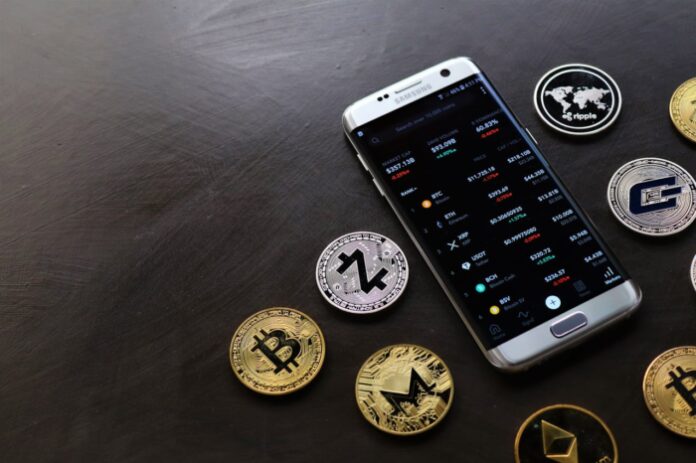Cryptocurrencies have revolutionised the way we think about money, providing new methods for transferring value across borders quickly and efficiently. Among the myriad of digital currencies available, stablecoins like USDT (Tether) and USDC (USD Coin) stand out due to their stability and ease of use. These digital assets are pegged to the US dollar, making them less volatile compared to other cryptocurrencies like Bitcoin or Ethereum. This stability makes USDT and USDC ideal for various financial transactions, including transfers to traditional bank accounts. This article explores the process of transferring USDT and USDC to bank accounts, the benefits and challenges associated with it, and the future outlook of such transactions.
Understanding USDT and USDC
What Are Stablecoins?
Stablecoins are a type of cryptocurrency designed to maintain a stable value relative to a reference currency, usually the US Dollar (USD) or other major fiat currencies. Unlike traditional cryptocurrencies such as Bitcoin or Ethereum, whose prices can fluctuate wildly, stablecoins are engineered to reduce volatility. According to PEXX, this stability is achieved through various mechanisms, including fiat-collateralized stablecoins, crypto-collateralised stablecoins, and algorithmic stablecoins.
USDT (Tether)
USDT, issued by Tether Limited, is one of the oldest and most widely used stablecoins. Each USDT token is pegged 1:1 to the US dollar, theoretically backed by Tether’s reserves, which include traditional currency and cash equivalents.
USDC (USD Coin)
USDC, created by the Centre consortium (which includes Circle and Coinbase), is another prominent stablecoin. Like USDT, each USDC token is backed 1:1 by US dollars held in reserve. USDC is known for its transparency, with monthly audits of its reserves conducted by a major accounting firm.
Why Transfer USDT and USDC to Bank Accounts?
Stability and Security
Transferring funds via stablecoins offers the advantage of stability, as their value remains relatively constant compared to other cryptocurrencies. This is particularly useful for businesses and individuals looking to avoid the volatility associated with digital assets.
Lower Fees
Cryptocurrency transfers can be significantly cheaper than traditional bank transfers, especially for international transactions. Stablecoins eliminate the need for currency conversion fees and can reduce intermediary costs.
Speed
Cryptocurrency transactions, including those involving USDT and USDC, are typically faster than traditional bank transfers, which can take several days to process. Blockchain technology enables near-instantaneous settlement of funds.
Accessibility
Stablecoins can be accessed ad transferred by anyone with an internet connection, providing financial services to individuals and businesses in regions with limited banking infrastructure.
How to Transfer USDT and USDC to Bank Accounts
Transferring USDT and USDC to a bank account involves several steps, and the process can vary depending on the platform used. Here’s a general outline of the process:
Step 1: Choose a Cryptocurrency Exchange or Platform
Select a reputable cryptocurrency exchange or platform that supports stablecoin to fiat conversions and bank transfers.
Step 2: Create and Verify Your Account
If you don’t already have an account, you will need to create one and complete the necessary verification steps. This often involves providing identification documents and proof of address to comply with Know Your Customer (KYC) regulations.
Step 3: Deposit USDT or USDC
Transfer your USDT or USDC from your digital wallet to your account on the chosen platform. This typically involves generating a deposit address on the platform and sending your stablecoins to this address.
Step 4: Convert USDT or USDC to Fiat Currency
Once your stablecoins are deposited, you will need to convert them to fiat currency (e.g., USD). This is usually done through the platform’s trading interface, where you can sell your USDT or USDC for USD.
Step 5: Withdraw to Your Bank Account
After converting your stablecoins to fiat currency, you can initiate a withdrawal to your bank account. You will need to provide your bank account details, and the platform will transfer the funds via bank transfer methods such as ACH, SEPA, or wire transfer.
Benefits of Transferring USDT and USDC to Bank Accounts
Financial Inclusion
Stablecoins like USDT and USDC provide financial services to the unbanked and underbanked populations by enabling digital transactions without the need for traditional banking infrastructure.
Cost-Effective Transfers
Stablecoin transfers can be more cost-effective than traditional banking methods, particularly for cross-border transactions, which often incur high fees and unfavourable exchange rates.
Speed and Efficiency
Blockchain technology allows for near-instantaneous transfers of stablecoins, reducing the waiting time associated with traditional bank transfers. This is particularly beneficial for urgent payments and remittances.
Transparency and Security
Stablecoin transactions are recorded on the blockchain, providing a transparent and immutable ledger of all transactions. This reduces the risk of fraud and enhances the security of funds.
Hedging Against Volatility
By converting volatile cryptocurrencies to stablecoins like USDT or USDC before transferring to a bank account, users can protect their funds from market fluctuations and ensure they receive a predictable amount in fiat currency.
Challenges and Considerations
Regulatory Uncertainty
The regulatory environment for cryptocurrencies and stablecoins is constantly evolving. Users must stay informed about the legal and regulatory requirements in their jurisdiction to ensure compliance and avoid potential issues.
Platform Reliability
Choosing a reliable and secure platform for stablecoin to fiat conversions and bank transfers is crucial. Users should research the platform’s reputation, security measures, and customer support to ensure a smooth and safe transaction process.
Transaction Fees
While stablecoin transfers are generally cheaper than traditional bank transfers, users should be aware of any fees associated with converting stablecoins to fiat currency and withdrawing to a bank account. These fees can vary between platforms.
Exchange Rates

The exchange rate between stablecoins and fiat currency can fluctuate slightly, affecting the amount received in the bank account. Users should monitor exchange rates and choose the optimal time to convert their funds.
Transfer Limits
Some platforms impose limits on the amount of stablecoins that can be converted and withdrawn to a bank account. Users should be aware of these limits and plan their transactions accordingly.
The Future of Stablecoin to Bank Transfers
Increased Adoption
As stablecoins become more widely accepted, their use for bank transfers is likely to increase. This is driven by the growing acceptance of cryptocurrencies in mainstream finance and the need for faster, cheaper, and more accessible financial services.
Regulatory Clarity
Regulatory frameworks for stablecoins are expected to become clearer over time, providing more certainty for users and businesses. This will likely lead to increased trust and adoption of stablecoin-based financial services.
Integration with Traditional Finance
Stablecoins are poised to bridge the gap between traditional finance and the cryptocurrency ecosystem. Financial institutions may increasingly integrate stablecoins into their services, offering seamless conversion and transfer options for their customers.
Technological Advancements
Advancements in blockchain technology and financial infrastructure will further enhance the efficiency, security, and usability of stablecoin to bank transfers. This includes improvements in transaction speeds, scalability, and interoperability between different blockchain networks.
Conclusion
Transferring USDT and USDC to bank accounts offers numerous benefits, including stability, lower fees, speed, and accessibility. As the adoption of stablecoins continues to grow, they are likely to play an increasingly important role in the global financial system. However, users must navigate regulatory uncertainties, choose reliable platforms, and be aware of potential fees and exchange rate fluctuations. By understanding these factors, individuals and businesses can effectively leverage stablecoins for bank transfers, unlocking new opportunities in the world of digital finance.
Find a Home-Based Business to Start-Up >>> Hundreds of Business Listings.

















































